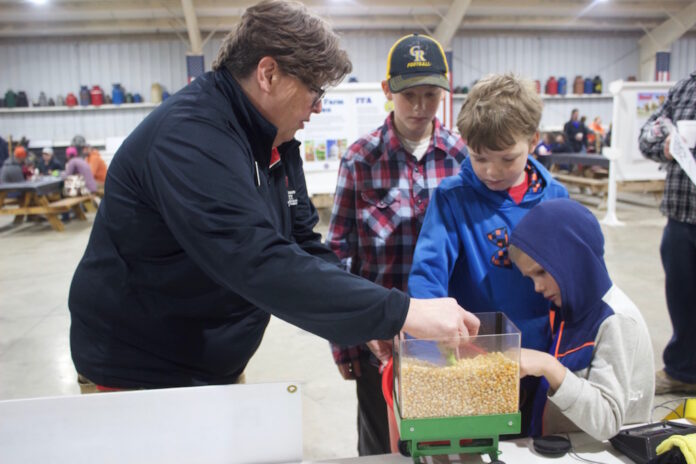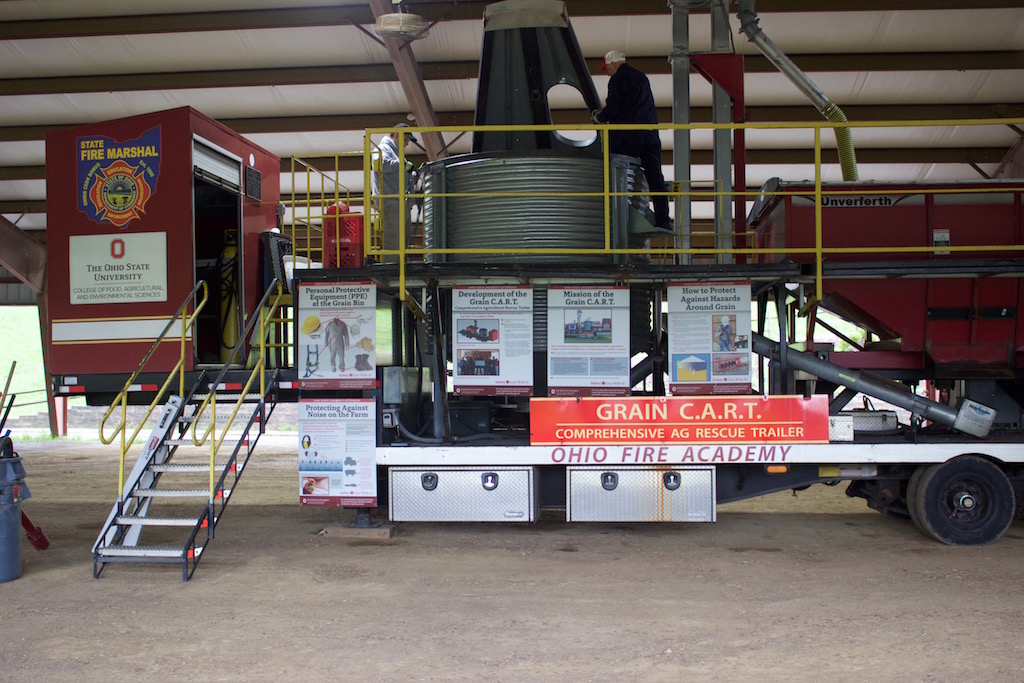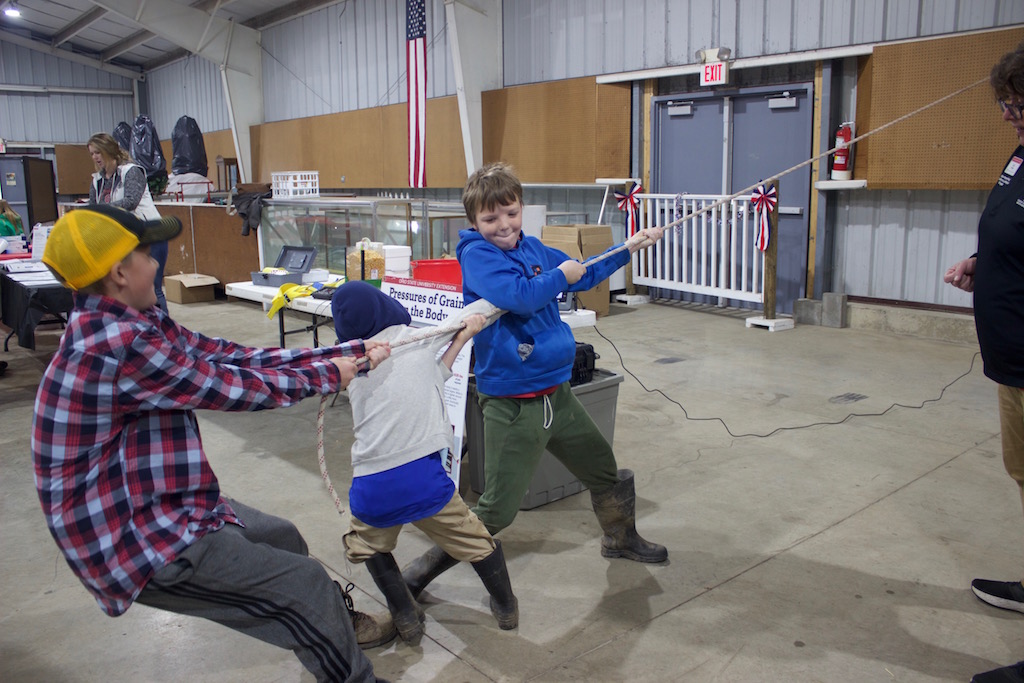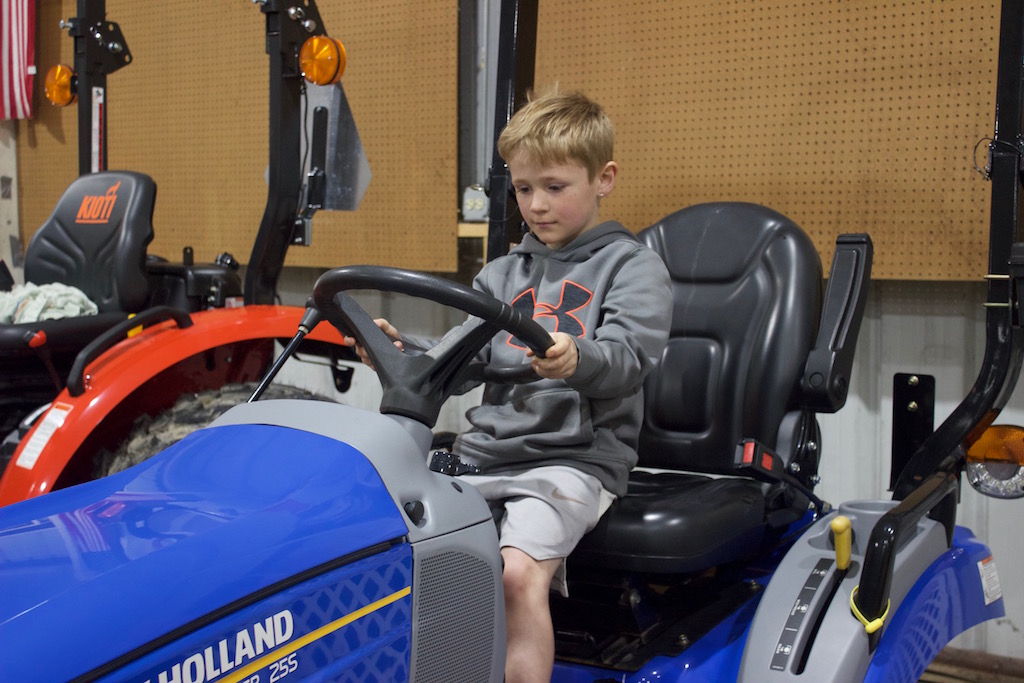
LISBON, Ohio — Tractors, grain bins and livestock, like many other things, are just part of farm life. It can be easy to take them for granted. But they can be a serious safety hazard.
“We all see tractors; we’re around them every day, but tractors account for a lot of heartbreak in the farming community,” said Haley Shoemaker, agriculture and natural resources educator for Ohio State University Extension with Columbiana and Mahoning counties.
To help families and children learn more about safety on the farm, Columbiana County Farm Bureau, with Ohio State Extension and other groups, held a Kids’ Safety Day May 7, at the Columbiana County Fairgrounds, in Lisbon.
“Today’s about the kids, connecting with the community, being a resource for them … to learn,” said Nick Kennedy, organization director for the county farm bureau.
Safety day
At the event, Shoemaker and other representatives from Ohio State Extension and other groups talked to families about everything from tractor and grain bin safety, to safely handling and storing medication, to livestock safety.
According to Ohio State, 235 farmers die every 10 years in agriculture-related incidents. Some of the most common reasons are suffocating from being engulfed in grain, and getting caught in moving equipment parts. But there are ways to stay safer on farms.
“Tractors are a part of farm life,” Shoemaker said. “But they don’t have to be dangerous.”
Fire departments
The same day, on the other side of the fairgrounds, five local fire departments met for grain bin rescue training. They had classroom training in the morning, and practiced with Ohio State Extension’s Grain Comprehensive Agricultural Rescue Trailer in the afternoon. The Grain CART was parked on the fairgrounds for attendees at the safety day to look at as well.
The Grain CART has a bin that trainers can fill with grain to practice rescue scenarios. Because there’s also a way for the grain to drain out in an emergency, it’s safe to use a person as the training scenario “victim,” explained Brent Gates, of the Ohio Fire Academy.
“We’ll run through however many different scenarios they want to do,” he said. Usually, that’s until people get too tired to keep going — the training is hard work.

Grain bins
In demonstrations at the Kids’ Safety Day, Lisa Pfeifer, program manager for Ohio State’s Ag Safety and Health Program, helped explain why. Flowing grain can very quickly trap a person, and it’s not easy to pull them back out.
A 165-pound person who is trapped up to their waist in grain will need 325 pounds of force to pull them out. Most of the kids who test out their strength on the rope Pfeifer brings along to events can only generate about 60 pounds of force.
Because of the amount of force needed to pull someone who is trapped in grain out, rescue crews have to use rescue tubes. Those tubes have to be lowered into the grain bin in pieces, since there’s usually not a large opening at the top of the grain bin, and built around the trapped person.
That whole process can take a while. But once it’s complete, it keeps the pressure of the grain outside the tube off of the person, and rescue workers can then either pull them out with a rescue auger, or start digging out the grain inside the tube to free the person, Pfeifer said.

Prevention
What she is focused on, however, is prevention. At the event, she used a mini gravity wagon and a doll to show families how quickly someone can be engulfed in grain. She encouraged children to stay away from grain bins and gravity wagons, and farms to use safety precautions like harnesses and signs that indicate when equipment is running.
She also encourages agricultural businesses and groups to avoid having things like sandboxes with grain in children’s spaces at events. She doesn’t want children to associate corn and other grains with places to play.
“Grain is not an environment to play in, and even just loose piles of feed,” Pfeifer said. “You could get engulfed, or, you know, somebody might not know you’re in it.”










